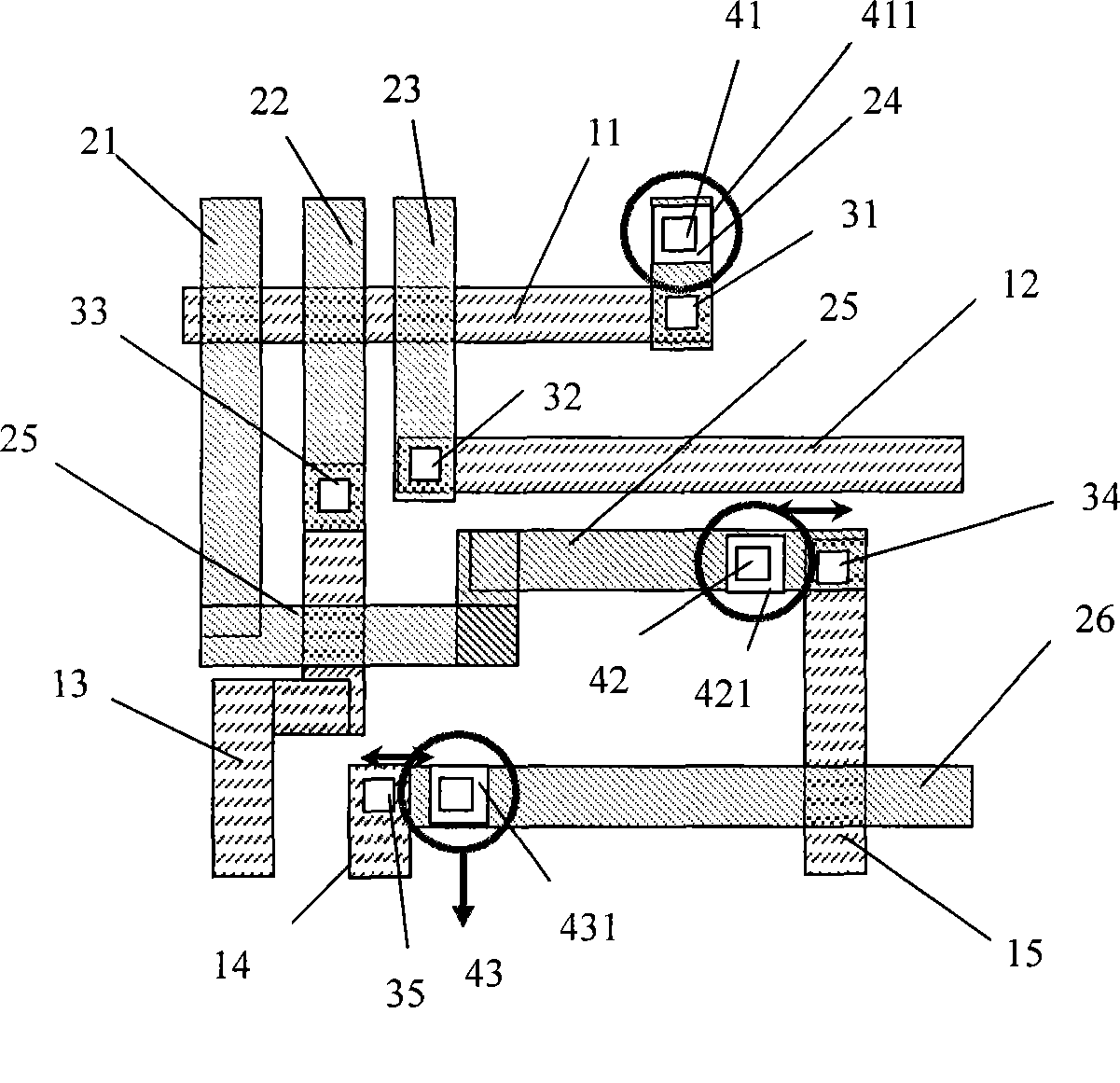OPC correcting method for forming auxiliary through hole
A polygonal and metal wire technology, applied in the field of OPC correction for forming auxiliary vias, can solve the problems of reduced pass rate, danger, open circuit, etc., to reduce the possibility of open circuit, improve the process tolerance, and reduce the number of effects.
- Summary
- Abstract
- Description
- Claims
- Application Information
AI Technical Summary
Problems solved by technology
Method used
Image
Examples
Embodiment 1
[0081] Figure 1A ~ Figure 1G It is a schematic diagram showing the first embodiment of the present invention, taking a logic product of 0.15 μm as an example to explain the process of providing auxiliary via holes.
[0082] Such as Figure 1A As shown, there is a first through hole 31 between the first metal line 11 of the first layer and the fourth metal line 24 of the second layer, and there is a hole 31 between the second metal line 12 of the first layer and the third metal line of the second layer. The second through hole 32 has a third through hole 33 between the third metal line of the first layer and the second metal line of the second layer, and has a third through hole 33 between the fifth metal line of the first layer and the fifth metal line of the second layer. The fourth through hole 34 has a through hole 35 between the fourth metal line of the first layer and the sixth metal line of the second layer.
[0083] Such as Figure 1B As shown, first check each via a...
Embodiment 2
[0091] Figure 2A-2H It is a schematic diagram showing the second embodiment of the present invention, taking a logic product of 0.18 μm as an example to explain the formation process of the auxiliary via hole.
[0092] Such as Figure 2A As shown, there is a first through hole 31 between the first metal line 11 of the first layer and the first metal line of the second layer, and there is a first through hole 31 between the second metal line 12 of the first layer and the second metal line of the second layer. Two through holes 32 , a third through hole 33 , and a fourth through hole 34 .
[0093] Generally, the through hole whose distance with any other surrounding through holes is greater than Lmin is regarded as an isolated through hole. Among the above through holes, the through hole 31 is an isolated through hole, such as Figure 2B shown.
[0094] Such as Figure 2C As shown, four auxiliary through holes are set at the minimum design interval (Min-Design-Pitch) around...
PUM
 Login to View More
Login to View More Abstract
Description
Claims
Application Information
 Login to View More
Login to View More - R&D Engineer
- R&D Manager
- IP Professional
- Industry Leading Data Capabilities
- Powerful AI technology
- Patent DNA Extraction
Browse by: Latest US Patents, China's latest patents, Technical Efficacy Thesaurus, Application Domain, Technology Topic, Popular Technical Reports.
© 2024 PatSnap. All rights reserved.Legal|Privacy policy|Modern Slavery Act Transparency Statement|Sitemap|About US| Contact US: help@patsnap.com










